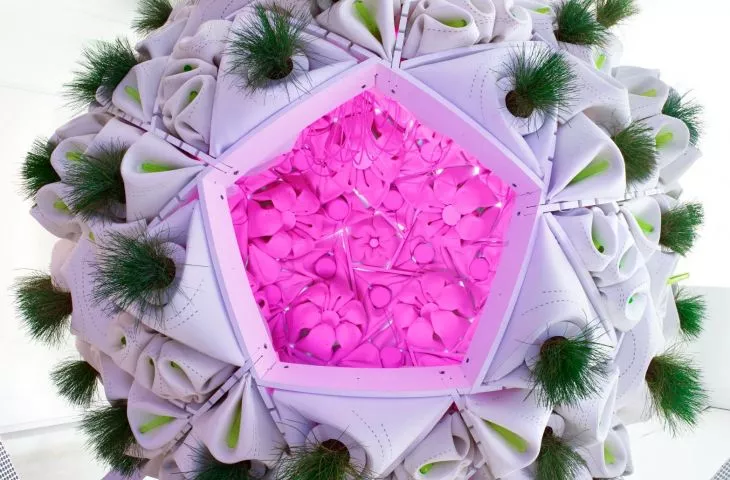Rapid urbanization and climate change are the biggest challenges facing architects and urban planners today. According to urban planner and New York University professor Mitchell Joachim, in order to fully respond to these problems, we need to combine both the idea of smart city and sustainable architecture.
The LafargeHolcim for Sustainable Construction Foundation will again this year award architects who take a modern approach to sustainable construction in their projects. Applications for the 6th edition can be sent until February 25, 2020. [more information here].
When thinking about the cities of the future, we mainly focus on technologies that aim to best communicate and integrate buildings, transportation and infrastructure. However, a smart city should, above all, be flexible and able to adapt to its environment. Therefore, in building and developing a city, it is crucial to strike a balance between planning, implementation, and adaptation to existing conditions, taking into account nature and its needs. According to Professor Mitchell Joachim, juror of the LafargeHolcim Awards, the question of what sustainable construction is and what it will be in the coming decades should already be answered. We are talking about both the architecture, the materials we use to create buildings and the idea with which we design them.
Professor Mitchell Joachim
© LafargeHolcim Awards organizers archive
the city as one sustainable organism
Mitchell Joachim, creator of the Terreform 1 project and visionary of living architecture, stresses that the surrounding urban fabric must function as a natural ecosystem, and all its elements should be seen as one organism. The fundamental challenge is to plan cities in such a way that their buildings are as compact and functional as possible. Innovations are needed that are consistent with the principles of social living and sustainable development, including the key factors of sustainable construction, i.e. progress, people, planet, prosperity, place. Therefore, sustainable architecture must place a premium on taking care of biodiversity in our immediate surroundings and using appropriate building materials that make this possible. Such materials include concrete, which has a much lower carbon footprint than brick, tile, or steel.
We are responding to the needs of tomorrow's sustainable architecture and construction today. After water, concrete is the second most commonly used material in construction and is the basis for further infrastructure development, as it is safe, fireproof and durable, and moreover adapts to climate change. It has one of the lowest carbon footprints in the world, as it typically has 10-15 percent cement in its composition, is produced locally and does not need to be transported long distances," stresses Marcin Mądry, director of marketing and strategy for Lafarge in Poland. He adds - Sustainable materials alone, however, are not enough, we need architects who will use these solutions in their projects.
architects of tomorrow
An incubator for such ideas is the international LafargeHolcim Awards competition. A jury of renowned architects and urban planners awards ideas that stand out for a maximally sustainable approach to architecture and respond to significant environmental, socioeconomic, technological and cultural issues in contemporary construction. Awards are given for creative and practical use of already existing building materials, as well as innovative architectural solutions for green building. The competition supports the projects of professionals, but also provides an opportunity for young talents to take their first steps in the industry.
Thanks to the global dimension of the LH Awards, you can also see what sustainable construction and architecture looks like around the world. Professor Joachim himself, a laureate and now a jury member of the competition, points out that the future of cities will be living buildings whose inhabitants will coexist with insects, among other things. As part of the Terreform 1 initiative, in cooperation with experts, he designed the exterior facade of a residential building, which is also a place where the migratory danaid - an endangered butterfly species - lives and reproduces. The basis of the project, however, is primarily the versatility of the facade, which can be an ecosystem for other insect species and can be adapted to any residential building in the world.
In the previous 5th edition of the LH Awards, more than five thousand works were submitted from 121 countries around the world. Among the awardees were two Poles in the Next Generation category: Malgorzata Mader with her project "Ecosociality," which involved transforming a factory in Lodz into a residential complex, and Jakub Grabowski with his project "Modern Asylum," where the young architect used the infrastructure of a monastery in Otyń in the Lublin province and transformed it into a behavioral addiction treatment center. The works of the awarded Polish architects were selected from 792 projects from all over Europe.
Exhibition of works by the LafargeHolcim Awards
© archives of the organizers of the LafargeHolcim Awards competition.
The call for entries for the 6th edition of the competition is currently underway, the deadline for submissions is February 25, 2020.
For more information, visit: www.lafarge.pl and www.lafargeholcim.com.













































